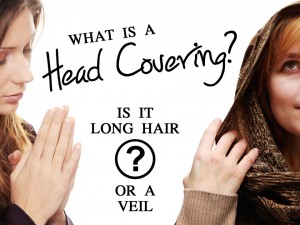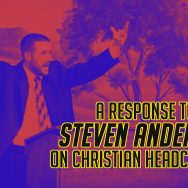Where did the “Long Hair” view come from?

The view that a “head covering” refers to a woman’s long hair is a very popular belief held by many Christians today. We decided to embark on a search to find out where this view originated and how recent it really is.
A. Philip Brown II (PhD, Bob Jones University) is one of the more prominent and articulate defenders of the “long hair” view. He says:
On the whole, modern interpreters deviated little from identifying the covering Paul requires as a veil or material headdress until the mid-twentieth century. Although the view that the covering Paul required or forbade was itself long hair had been held popularly by various groups throughout the 20th century, Abel Isaakson was the first to offer the scholarly community an extended argument for this position in print. 1) A. Philip Brown II – A Survey of the History of the Interpretation of 1 Corinthians 11:2-16 (Aldersgate Forum, 2011) Page 12 [Read here]
So Dr. Brown identifies the starting point of this view (which he holds himself) as the 20th century. He indicates that Abel Isaakson writing in 1965 was the first to make a scholarly defense of this doctrine. However, he footnotes that in 1947, the Roman Catholic priest Stefan Lösch “made a similar argument…however, it received little attention.” 2) A. Philip Brown II – A Survey of the History of the Interpretation of 1 Corinthians 11:2-16 (Aldersgate Forum, 2011) Page 12, footnote #49
Brown also highlights two historical sources: John Chrysotom (349-407AD) and Epiphanius (315-403AD). He argues that they understood the covering forbidden by men in 1 Cor 11:4 as long hair. Now Brown rightly points out that Chrysotom believed it forbade both, that “men must not wear long hair and must not cover their heads when praying or prophesying” 3) A. Philip Brown II – A Survey of the History of the Interpretation of 1 Corinthians 11:2-16 (Aldersgate Forum, 2011) Page 5 and that he “preached that God had given women long hair as a covering in order to teach them to wear a material covering at all times.” 4) A. Philip Brown II – A Survey of the History of the Interpretation of 1 Corinthians 11:2-16 (Aldersgate Forum, 2011) Page 7 So this is not the “long hair” view. Likewise even though Epiphanius substitutes the word “covering” for “long hair” in the 1 Cor 11 passages that deal with men 5) A. Philip Brown II – Chrysostom & Epiphanius: Long Hair Prohibited as Covering in 1 Cor. 11:4, 7 (Evangelical Theological Society, 2011) Pages 9-10 has numerous references. [source link] , he substitutes the word “authority” for “veil” when quoting 1 Corintians 11:10. He says, “The woman ought to have a veil on her head because of the angels.” 6) Epiphanius – The Panarion of Epiphanius of Salamis [translated by Frank Williams]: Book I sects 1-46 (Koninklijke Brill, 2009) Page 196 So once again, by saying a woman needs to wear a “veil,” he’s distinguishing himself from the belief that a woman’s long hair is the only covering that is necessary.
Now even though the mid-twentith century is as far back as Brown traces this view, It was advocated a little earlier than that.
Frédéric Louis Godet writing in 1886 mentions that the “long hair” view was taught by another theologian. He said:
“It has been objected, not without a touch of irony, that for the very reason that nature has endowed woman with such a covering, she does not need to add a second and artificial one (Holsten).” 7) Frédéric Louis Godet – Commentary on St. Paul’s First Epistle to the Corinthians, Volume 2 (T&T Clark, 1893) Page 129
He references Karl Christian Johann Holsten (1825-1897) as an advocate of this view. Holsten was a German liberal theologian who subscribed to the Tübingen school of thought. They were naturalistic in their view of Christianity and believed Paul and Peter taught two different forms of Christianity. This type of thought was advocated at the University of Tübingen in the late 19th century. It may be that the “long hair” view was also promoted in their theology program since Stefan Lösch also attended this university from 1900-1904. As previously mentioned, he was an early defender of the “long hair” view.
So it seems that the origin of the belief 8) It is entirely possible that someone may unearth an earlier reference. We can’t dogmatically say this is the beginning, but that it is as far back as we could trace it. that a woman’s long hair is the only covering she needs, was in 1880 by the German theologian, Karl Holsten. However, this view did not receive a wider acceptance by Christians until after Abel Isaakson’s defense in 1965. Though there are good biblical reasons for rejecting the “long hair” view, we also believe that the newness of the doctrine should also give Christians another reason for hesitating to embrace it. Did all of Christendom for 1900 years completely misunderstand Paul’s words by seeing a material covering in view? We doubt it. Though we believe the Bible is the final authority on all matters of life and doctrine, separating ourselves from what the church has unanimously believed throughout the ages should not be done lightly. To quote a popular saying, “if it’s new, it’s probably not true.”
References
- The Head Covering Movement’s New Direction: A Call for Team Members - July 11, 2025
- Is Head Covering Related to Spiritual Gifts? A Response to Barry York - July 5, 2023
- A Husband’s Authority is Limited (He is Not Pastor or King) - November 14, 2022



